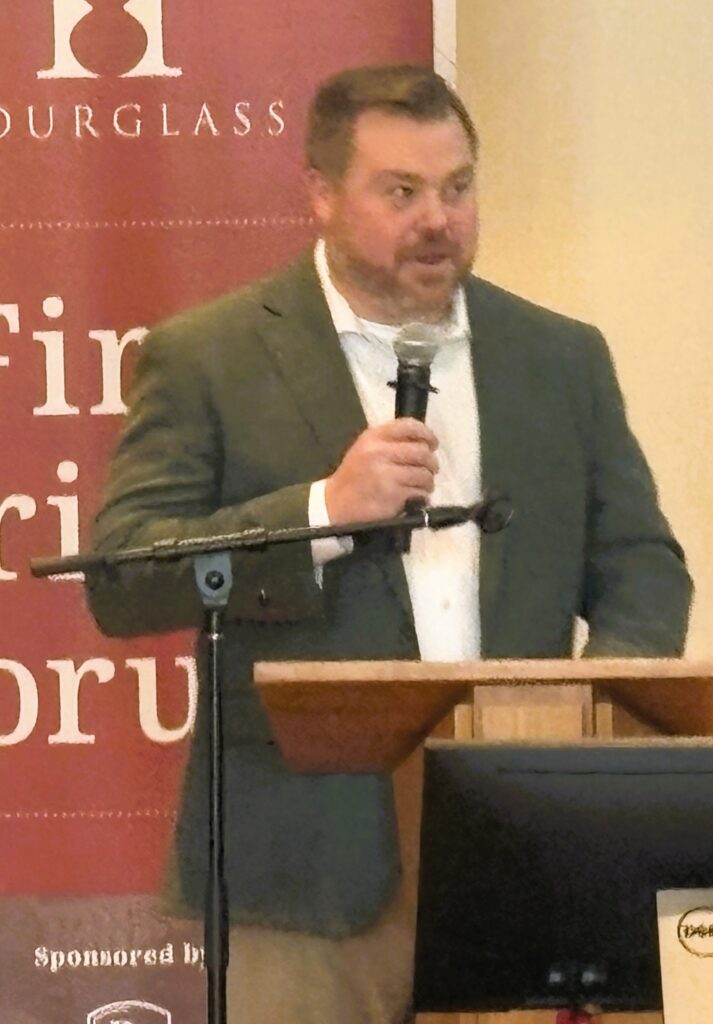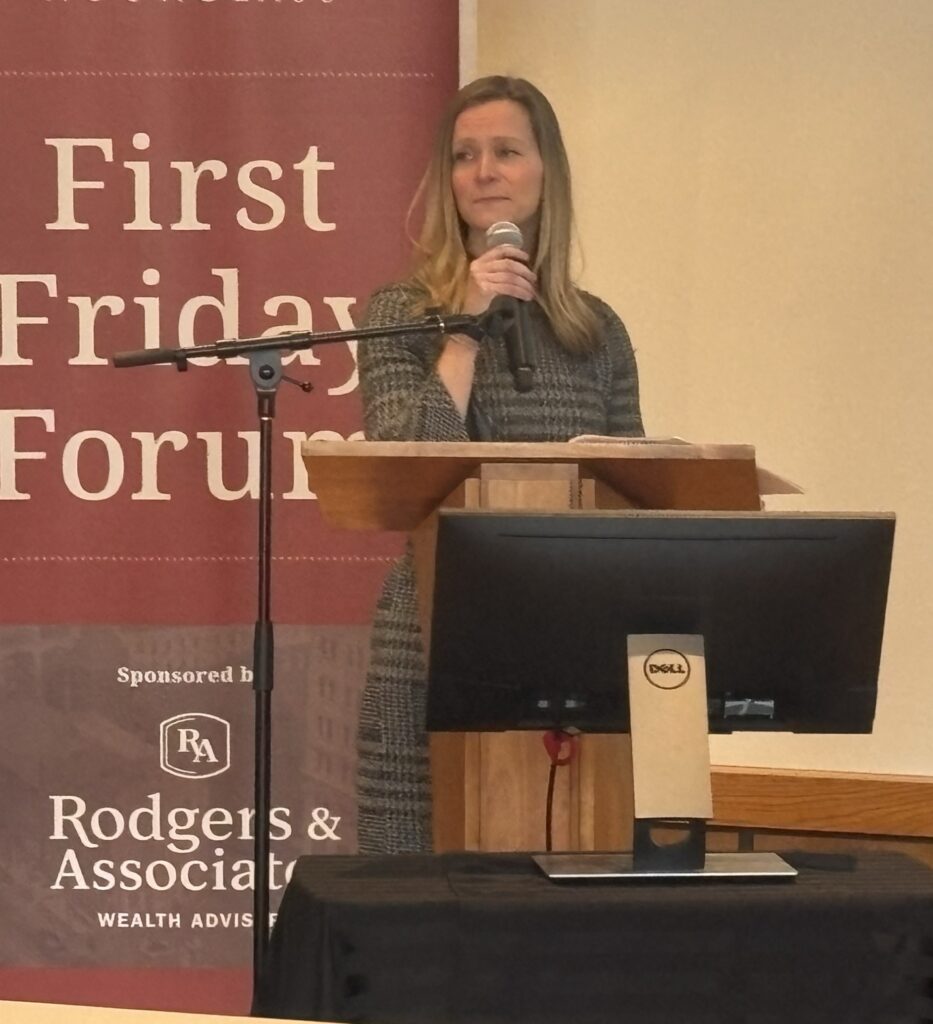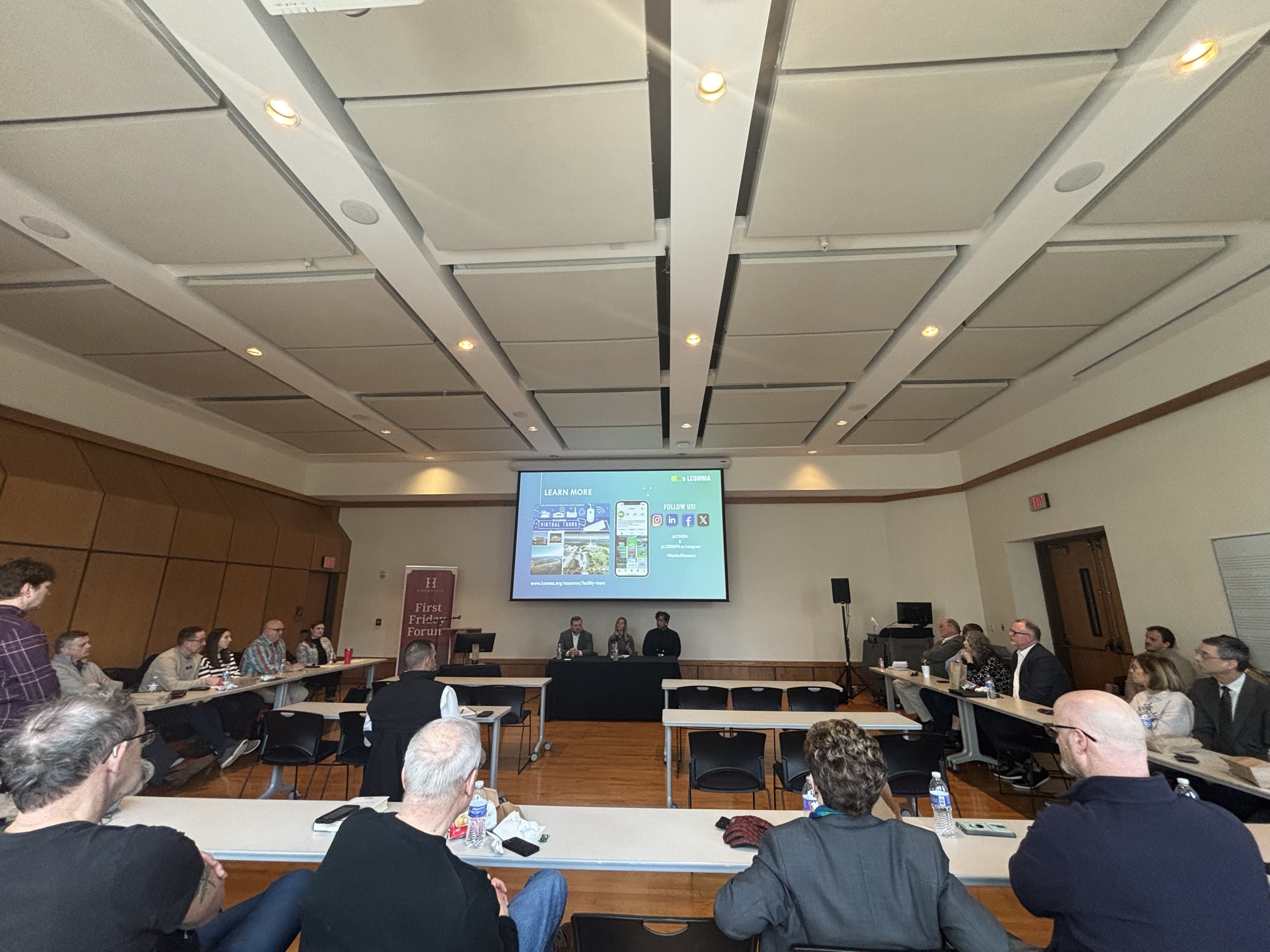“Do you know what happens to your waste after you put in on the curb?” asked Daniel Youngs, Executive Director of Lancaster County Solid Waste Management Authority (LCSWMA).
Friday, Hourglass hosted its February forum highlighting the work and initiatives of LCSWMA. LCSWMA manages the trash and recyclable materials from Lancaster County, Pennsylvania homes and businesses, as well as trash from the City of Harrisburg and surrounding Dauphin County communities. Speakers from LCSWMA included Daniel Youngs, Director of Sustainability, Michelle Marsh, and Public Relations Manager, Janine James.
Daniel Youngs

LCSWMA is a municipal authority that manages solid waste, trash, construction, and demolition material in Lancaster County. In 2013, the company purchased Harrisburg Susquehanna Resource Management complex, the Harrisburg incinerator and has been providing service to Dauphin County. The integrated system manages about 950,000 tons per year and generates $100 million per year, that provides about 20% of annual revenue to offset disposal fees. There is no tax money to support the system.
Youngs explained there are six core principles the company operates on: Financial strength, organizational culture, environmental excellence, customer and community service, risk management, and innovation.
Youngs repeated his question “Does anybody know what happens with their trash after it goes from the curb?” and received an answer. Youngs informed the audience that the company does not pick up trash and partners with private waste management haulers to bring trash to its site to consolidate it into the proper disposal method.
Youngs played this video that provided greater insight on how LCSWMA consolidates the waste it receives. Video
Janine James

Local government has 44 municipalities that participate in curbside collection of recycling. Lancaster County recycles an average of 49%. That is significantly higher than the US average of 32.1%.
The Household Hazardous Waste facility is a free service that Lancaster County residents can use to dispose of old technology and hazardous material that cannot be thrown away regularly. In 2023, the facility had 44,635 visitors. The facility has collected 1,013 tons of material and out of that 537 tons were electronics. James encouraged the audience to bring old technology into the facility and to keep recycling properly in order to create a more sustainable path.
Michelle Marsh

Marsh discussed the significance of LCSWMA’s waste to energy system. The decision to adopt waste to energy technology dates back to the 1986 Lancaster County Solid Waste Management Plan. Lancaster leaders were tasked to address the issue of growing waste volumes and limited landfill capacity. “The 1986 plan sought to utilize waste to energy technology to reduce the volume of waste while also enhancing the county’s recycling programs.” Currently Lancaster County recycles over 327,000 tons; back in 1986 Lancaster recycled less than 3,000 tons. One of the early goals of the plan was to achieve a recycling rate of 5% by 1990.
The early waste to energy plan created a foundation for LCSWMA’s integrated system. The Lancaster Waste to Energy facility was opened in 1991. The primary function of the facility is to burn combustible waste to reduce its volume while generating clean renewable electricity and recover valuable metals. The facility is permitted to receive 1,200 tons of waste each day, or about 400,000 tons annually. Waste to energy helps to conserve land by reducing the volume of waste by 90%.
LCSWMA has built a partnership with Perdue AgriBusiness. Perdue AgriBusiness built a $60 million soybean crush facility next to the waste-to-energy plant to utilize its steam and process water.






